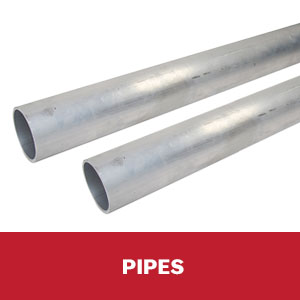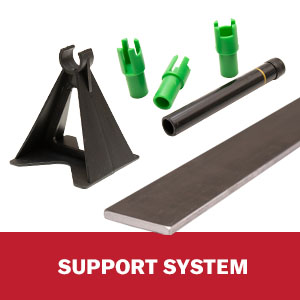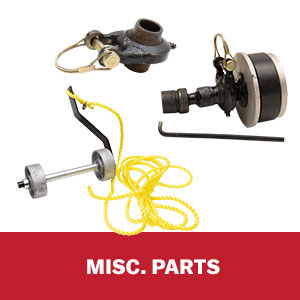Vibrating Screeds vs. Spin Screed®
- ▪ Low slump concrete must be used (3 inches or less) according to the Portland Cement Association.
- ▪ The screed is very heavy.
- ▪ The length of the screed cannot be changed easily.
- ▪ The screed is noisy. (gas motor and vibration)
- ▪ The screed is very difficult and time consuming to clean.
- ▪ The screed cannot be used on a very large slope.
- ▪ The screed is expensive and difficult to store. It is hard to load and move from one job to another.
- ▪ The Spin Screed® can be used with concrete having more than a 3 inch slump and still produce a high quality durable surface.
- ▪ The Spin Screed® is lightweight — less than 100 pounds for a 22 foot length.
- ▪ The length of the Spin Screed® can be rapidly changed from one length to another up to 22 feet.
- ▪ The Spin Screed® is quiet. (powered by an electric power head)
- ▪ The Spin Screed® is easy to clean.
- ▪ The Spin Screed® can be used on steep slopes.
- ▪ The Spin Screed® is inexpensive and easy to store and move. One man can load a 22 foot screed on top of a pickup truck and head for the next job.
The truss type vibrating screed produces great concrete surfaces with excellent durability when stiff concrete having a slump of 3 inches or less is used. But according to the Portland Cement Association, the vibrating screed should "not be used when placing concrete having a slump in excess of 3 inches"
Since most concrete is placed wetter than a 3 inch slump, the vibrating screed should not be used because it drives the aggregate deep below the surface bringing up too much water and cement paste. The surface quickly fails especially in areas where freeze thaw cycles and deicing salts are encountered.
Therefore, if you choose to pour concrete having a slump in excess of 3 inches (as most people do) you should use the Spin Screed® because when it brings paste to the surface, it does not bring water with it as does the vibrating screed. The Spin Screed® leaves the aggregate immediately below the surface producing a high quality durable concrete surface.
With the Spin Screed®, you will place higher quality, flatter concrete surfaces with less work.
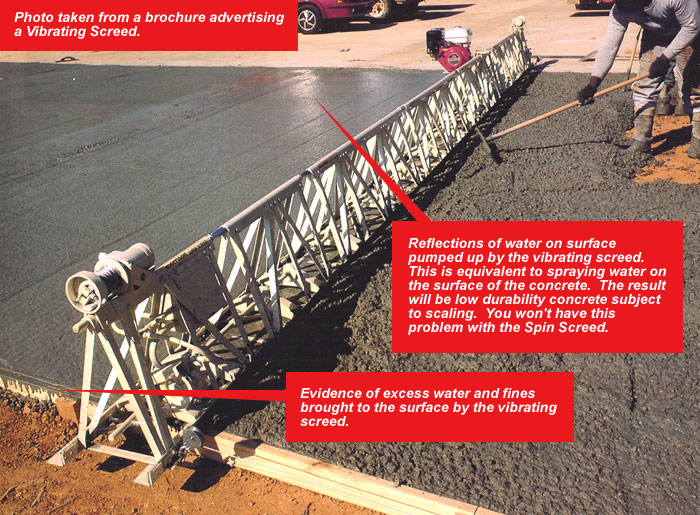
The above image is taken from a brochure advertising a truss type vibratory screed. Note the reflections from the surface of the concrete caused by excess water being brought to the surface by the vibrating screed. Also notice that excess water and cement paste is running over the edge of the concrete forms. The surface produced by this vibrating screed will have a very high water cement ratio causing it to be low in durability and subject to scaling during winter freeze thaw cycles.
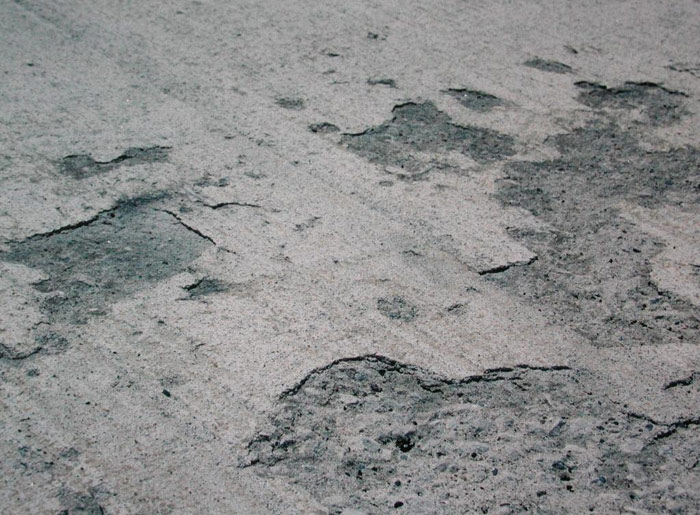
The above photograph was taken of a section of two year old Illinois street that was placed using a truss type vibrating screed. The slump of this concrete was in excess of 3 inches. The surface that the vibrating screed produced was weak and low in durability and failed during the first winter when it was exposed to freeze thaw cycles and deicing salts. You can see from the photograph that the aggregate was pushed well below the surface of the concrete resulting in a thick layer of cement paste at the surface devoid of aggregate. This produces a low durability surface. The Spin Screed® leaves the aggregate immediately below the surface resulting in a surface having greater durability and less likely to scale.

